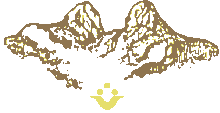I found some interesting YouTube videos today from a Global Buddhist Conference that was held a few years ago on women in buddhism. I thought I'd share them, in light of this weekend's retreat, the second day of which will feature a dedication to female ancestors.
This one, with Dr. Karma Lekshe Tsomo, discusses some inequalities for women in Buddhism around the world, and provides some info on some of our women ancestors:
http://www.youtube.com/watch?v=GbAijRlg0-E&feature=player_embedded#[/video]] ... _embedded#!
And this is a Q&A about the ordination of women:
http://www.youtube.com/watch?v=O10XPiF1wJw&feature=related[/video]] ... re=related
Hope these are of interest!
Gassho,
Jennifer
This one, with Dr. Karma Lekshe Tsomo, discusses some inequalities for women in Buddhism around the world, and provides some info on some of our women ancestors:
http://www.youtube.com/watch?v=GbAijRlg0-E&feature=player_embedded#[/video]] ... _embedded#!
And this is a Q&A about the ordination of women:
http://www.youtube.com/watch?v=O10XPiF1wJw&feature=related[/video]] ... re=related
Hope these are of interest!
Gassho,
Jennifer





Comment